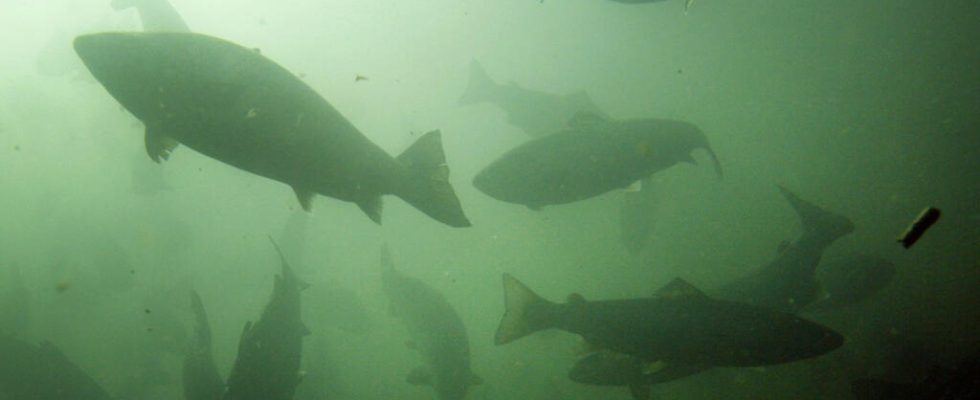A truck carrying more than 100,000 salmon overturned in an accident last week in a mountainous region of the western United States, but the majority of its cargo miraculously managed to reach a stream below, according to the American authorities.
2 mins
“ About 77,000 young salmon reached the river “, explained the Oregon Department of Fish and Wildlife, in a press release released Tuesday. The tanker truck was traveling in a mountainous area when it “ fell over on the roof ” In ” a sharp turn “.
Its driver was not seriously injured. Unfortunately, not all the salmon had the strength to reach the water: 25,000 of them perished in the truck or on the banks. Chinook salmon are in danger because of the drought that has hit the American West in recent years.
Read alsoThreatened by drought, California salmon travel to the sea by truck
Their dramatic decline prompted a ban on salmon fishing last year off California and much of Oregon, which is likely to be extended into 2024 – the announcement of its likely renewal is imminent. But the accident is not expected to impact our ability to collect future broodstock or maintain full production targets in the future », assure the authorities.
Salmon transported by truck to reach the Pacific
Salmon are migratory: they are born in rivers, swim towards the Pacific when they reach maturity, where they spend several years, and eventually return to their natal waterways to reproduce and die. But this cycle was disrupted by the drought that hit the American West over the last decade, which made the rivers too low or too hot.
To help the salmon, authorities therefore raise fry in ponds and transport them by tanker truck to waterways near the Pacific, once they have reached a sufficient size to migrate to the ocean. Both the federal and Oregon states raise young salmon to maturity and transport them hundreds of miles for release further down the Inmaha River. This advances them on their difficult migratory route to the Pacific, and it allows humans to continue sport fishing.
This transport dates back to the 1980s in the region, where numerous dams erected to supply cities and American agriculture deprived salmon of 80% of their habitat to reproduce. But it has accelerated in recent years because of drought.
Read alsoEnvironment: should we stop eating chicken and salmon to preserve the planet?
